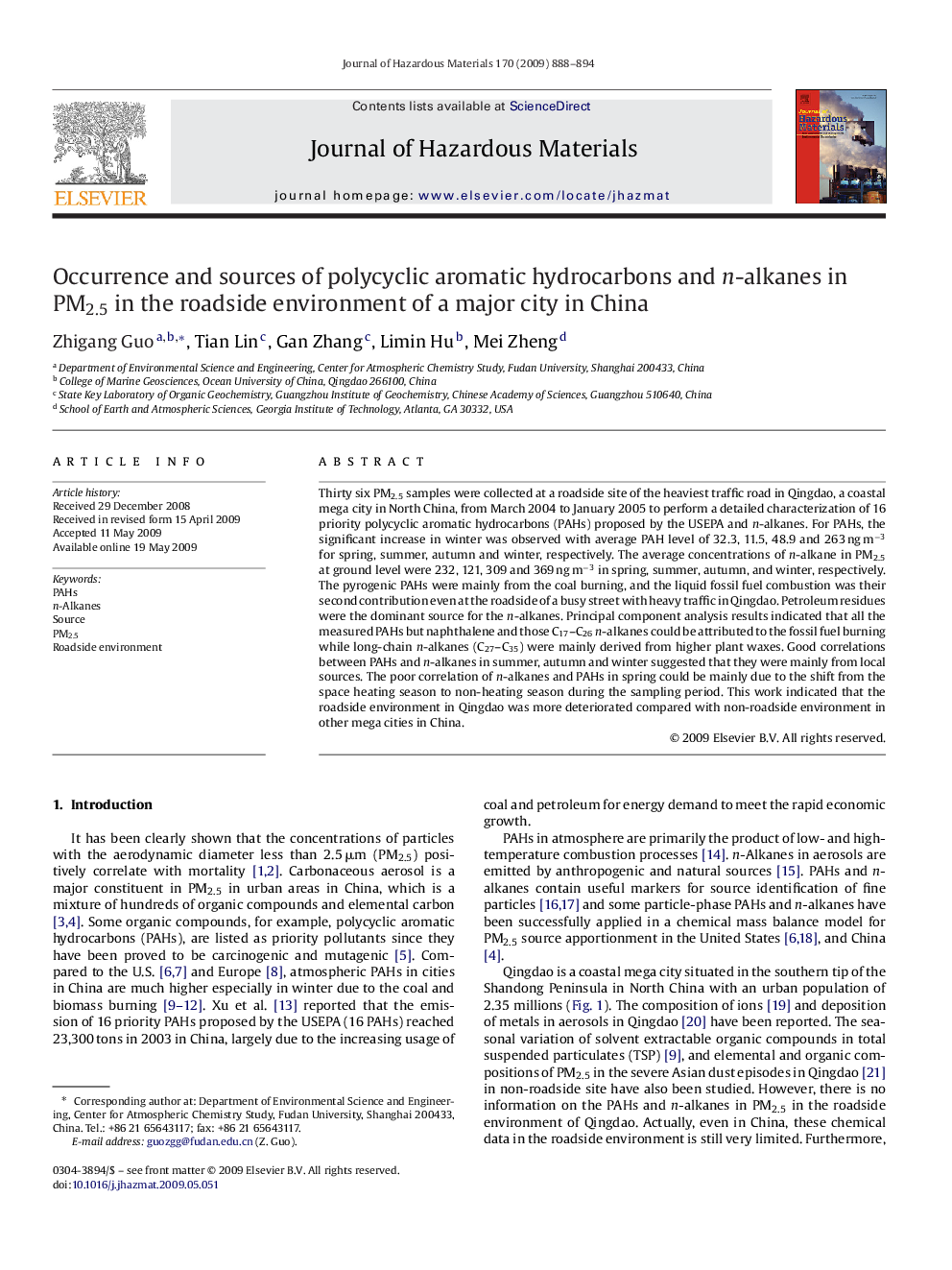| Article ID | Journal | Published Year | Pages | File Type |
|---|---|---|---|---|
| 581249 | Journal of Hazardous Materials | 2009 | 7 Pages |
Abstract
Thirty six PM2.5 samples were collected at a roadside site of the heaviest traffic road in Qingdao, a coastal mega city in North China, from March 2004 to January 2005 to perform a detailed characterization of 16 priority polycyclic aromatic hydrocarbons (PAHs) proposed by the USEPA and n-alkanes. For PAHs, the significant increase in winter was observed with average PAH level of 32.3, 11.5, 48.9 and 263 ng mâ3 for spring, summer, autumn and winter, respectively. The average concentrations of n-alkane in PM2.5 at ground level were 232, 121, 309 and 369 ng mâ3 in spring, summer, autumn, and winter, respectively. The pyrogenic PAHs were mainly from the coal burning, and the liquid fossil fuel combustion was their second contribution even at the roadside of a busy street with heavy traffic in Qingdao. Petroleum residues were the dominant source for the n-alkanes. Principal component analysis results indicated that all the measured PAHs but naphthalene and those C17-C26n-alkanes could be attributed to the fossil fuel burning while long-chain n-alkanes (C27-C35) were mainly derived from higher plant waxes. Good correlations between PAHs and n-alkanes in summer, autumn and winter suggested that they were mainly from local sources. The poor correlation of n-alkanes and PAHs in spring could be mainly due to the shift from the space heating season to non-heating season during the sampling period. This work indicated that the roadside environment in Qingdao was more deteriorated compared with non-roadside environment in other mega cities in China.
Related Topics
Physical Sciences and Engineering
Chemical Engineering
Chemical Health and Safety
Authors
Zhigang Guo, Tian Lin, Gan Zhang, Limin Hu, Mei Zheng,
